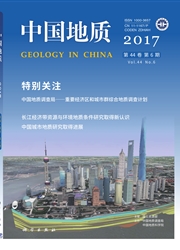

 中文摘要:
中文摘要:
近期轮南奥陶系沉积储层研究取得了几个方面的重要进展:发现了两期三套风化壳岩溶储集系统,其中海西期一套,存在于奥陶系顶部,加里东期两套,存在于奥陶系内部;确定了轮古东奥陶系储集层为风化壳岩溶缝洞性储层;发现了桑塔木组礁滩相储集层。桑塔木组沉积早期轮南地区具有成礁环境,局部发育有小型生物礁;修正了以往对奥陶系沉积相的划分,将奥陶系碳酸盐台地边缘的位置东移30km;提出了奥陶系内部风化壳储层形成的热沉降机制,认为晚奥陶世早期塔里木盆地存在一次热升降运动,该运动使轮南地区发生不均衡抬升,奥陶系良里塔格组出露剥蚀,形成轮南地区广泛分布的风化壳岩溶储集系统,从而揭示了轮南地区奥陶系更为良好的勘探前景。
 英文摘要:
英文摘要:
Recently major advances have been made in the study of Ordovician sedimentary reservoirs in Lunnan, Tarim Basin. Three weathering crust reservoir systems of two phases have been found: one Hercynian reservoir system occurs at the top of the Ordovician and two Caledonian systems in the interior of the Ordovician. The Ordovician reef bank-facies reservoir in Lungudong is determined to be a weathering crust karst fissure-cave one, and a reef bank-facies reservoir is found in the Sangtamu Formation. In the early deposition of the Sangtamu Formation, a reef-forming environment occurred, with small organic reefs developed locally. The previous division of Ordovician sedimentary facies is revised, and the location of the Ordovician carbonate platform margin is shifted eastward for 30 km. The thermal subsidence mechanism is proposed for the interpretation of the formation of the weathering crust reservoir inside the Ordovician. It is thought that there existed a thermal uplift and subsidence movement in the Tarim basin during the early Late Ordovician, which resulted in nonuniform uplift of the Lunnan area and erosion and exposure of the Lianglitag Formation, thus forming the weathering crust karst reservoir system in the area and revealing good petroleum prospects in the tunnan area.
 同期刊论文项目
同期刊论文项目
 同项目期刊论文
同项目期刊论文
 期刊信息
期刊信息
